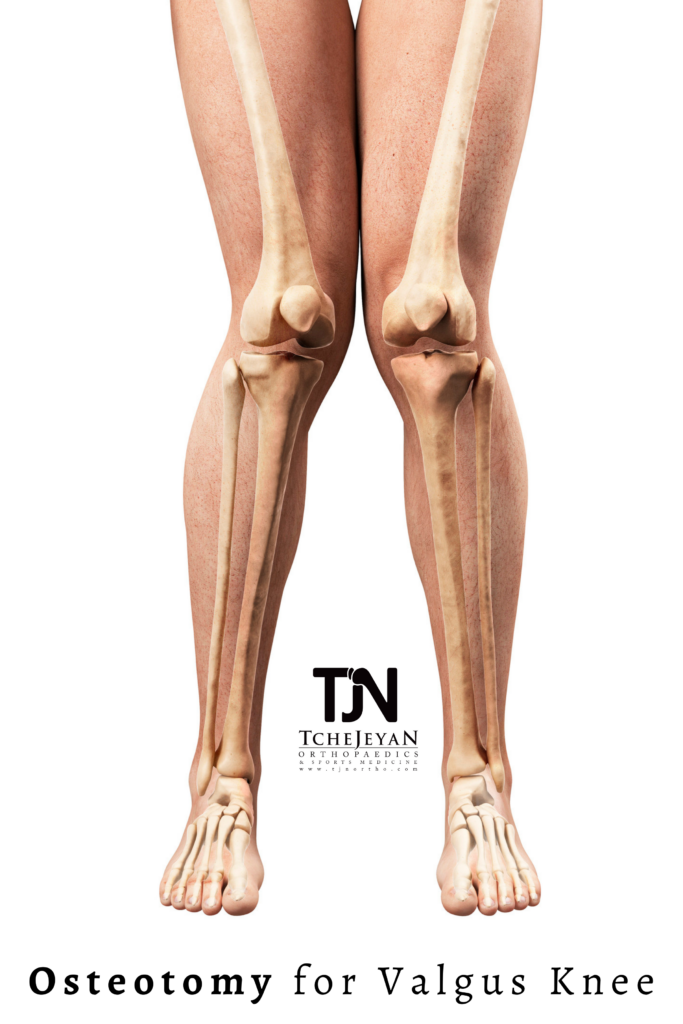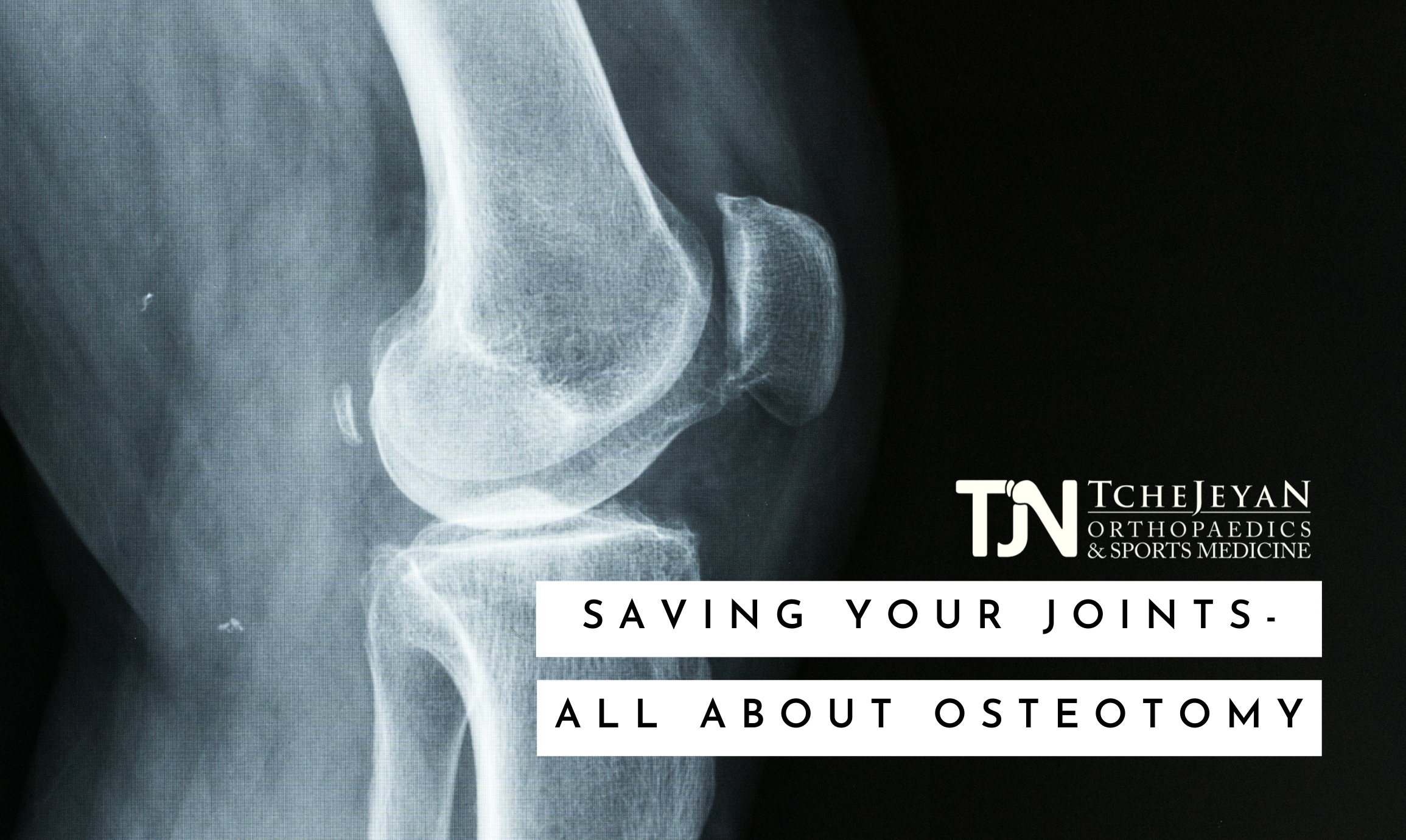Although our body’s skeletal anatomy is generally the same, not all people are born with every bone in perfect condition or position. Abnormal bone alignment is a genetic condition that places abnormal pressure upon a joint.
In situations like this, patients can develop early arthritic changes at a young age. Rather than living in pain, a surgeon may instead recommend a realignment procedure or Osteotomy.
What is Osteotomy?
Osteotomy is the surgical cutting or removal of a piece of bone. This procedure is done in an attempt to restore a patient’s otherwise abnormal alignment to the neutral position. In the lower extremities, an example of abnormal alignment would be “knocked” or “bowed” knees.

In Figure 2, neutral alignment is shown by the centerline going straight from the hip to ankle, through the center of the knee. Abnormal alignment is shown in Figures 1 and 3.
Varus Knee is a condition in which the tibia turns inward instead of aligning with the femur. This is often referred to as bowlegged. Similarly, Valgus Knee occurs when the bone at the knee joint angles out and away from that center line of alignment (knocked knees). Either of these cases cause forced additional pressure on the opposite side of the joint as the body attempts to compensate for the misalignment. This abnormal force almost always results in pain and discomfort for the person and is the precursor to early osteoarthritis.
Bowed Knees (Varus) can be corrected by a type of Osteotomy called an HTO or High Tibial Osteotomy. With HTO, the tibial bone is cut nearly all the way through. With x-ray guidance, the surgeon is able to neutralize the alignment with precise measurements and a bone wedge. Screws and plates hold the bone in position until it heals.
Knocked Knees (Valgus) require a similar procedure called DFO, or Distal Femoral Osteotomy. With DFO, the femur bone is cut at its end, above the joint, at an angle. The bone is positioned outward, in order to open the foot to a more neutral position. Then the bone is stabilized with a screw and plate system to lock in the femoral alignment.
Why Osteotomy?
With an osteotomy, sufferers of skeletal abnormalities can enjoy normal alignment and live generally pain-free. This minimally invasive procedure provides several advantages. Patients recover more quickly than with other, more intense surgeries. Likewise, the lack of any foreign implant devices means less risk of complications. The healed results of Osteotomies often create a more durable structure than joint replacement surgery.
One of Dr. T’s 27-year-old patients tore his meniscus in a skateboarding injury. Later, he developed some changes on the outside of his knee. With Osteotomy, Dr. T. was able to correct the patient’s alignment from a 12 degree Valgus to 5 degrees. This eliminated his knee pain on the one side, thanks to the realignment. Once healed, he returned to normal activity and his joint is as good as new.
To ensure a successful recovery for each patient, surgeons may even combine Osteotomies with OATs. If cartilage defects develop on an abnormally aligned joint, the surgeon will take care of each issue in one procedure. Although osteotomies are not the most common orthopedic procedure, they are a very important part of the orthopedic specialty.

Alignment Matters!
Your body’s alignment is imperative for its normal operation and longevity. It’s similar to the alignment of your vehicle. If your car pulls to the right, that side of your tire will experience more abnormal wear over time. The same goes for your body. If your leg is misaligned, you can wear out one side of the joint prematurely due to the increased strain on that particular side.
People who are highly physically active – such as runners or contractors, may develop these symptoms earlier in life and require an Osteotomy, whereas someone of more advanced age may need an actual joint replacement. In either situation, the most important solution comes with taking each case on an individual basis. That’s the benefit of seeing Dr. Gregory H. Tchejeyan. He truly considers each individual case with great care. Most orthopedic clinics have patients who see PAs or a registered nurse. At TJN Ortho, you see Dr. Tchejeyan from beginning to end. Your care is his top priority.
To schedule your consultation, stop by our clinic in Thousand Oaks or contact us here.


[…] options for knee injuries. This is because it is highly effective at treating things like patellar misalignment, ACL and PCL tears, and torn cartilage. It is minimally invasive and healing time is fast and […]